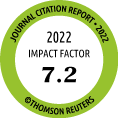|
Background:
The prevalence of
asthma and allergic
diseases has been
reported to be
higher in urban than
in rural areas
between developed
and underdeveloped
countries and within
any given country.
Studies in Turkey
have yielded
different results
for different
regions. This study
aimed to investigate
the prevalence of
asthma and atopy in
Sanliurfa, Turkey,
and the influence of
environmental
factors.
Materials and
Methods: We
recruited 1108
children from
different areas of
Sanliurfa and
administered the
questionnaire of the
International Study
of Asthma and
Allergies in
Childhood. Items
asking for
socioeconomic data
were also included.
Skin prick and
purified protein
derivative tests
were performed on
the children.
Measles antibodies
were determined and
feces were analyzed
for parasites.
Results: The
total prevalence of
atopic diseases was
8.6 % (n = 95 /
1108), asthma 1.9 %
(n = 21 / 1108),
allergic rhinitis
2.9 % (n = 32/1108),
and allergic
conjunctivitis 3.8 %
(n = 42 / 1108). The
rate of atopic
diseases was 5.6 %
(n = 32 / 573) in
children attending
schools in
peripheral, less
urban, slum areas
while it was 11.8 %
(n = 63 / 535) in
those attending city-center
schools (OR, 2.2; 95
% confidence
interval [CI];
1.4-3.5; P <001).
Skin prick test
positivity was
observed in 3.9 % (n
= 43 / 1108) overall;
at schools in slum
areas it was 1.9 %
(n = 11 / 573),
whereas at central
schools the rate was
6 % (n = 32 / 535)
(OR, 4.08; 95 % CI,
2.03-8.20; P <
.001). The
prevalence of asthma
and atopic diseases
was significantly
higher in children
who have a family
history of atopy,
attend a central
school, live in an
apartment, have more
rooms in their homes,
and enjoy better
economic conditions.
Conclusion:
We found
associations between
various factors
suggested by the
hygiene hypothesis
and asthma, and very
low rates of
prevalence of asthma
and atopic diseases
both in Sanliurfa in
comparison with the
more developed
western regions and
in the peripheral
slum areas. The
hygiene hypothesis
is helpful in
explaining these
observations.
Keywords:
Asthma. Atopy.
Prevalence. Turkey. |



